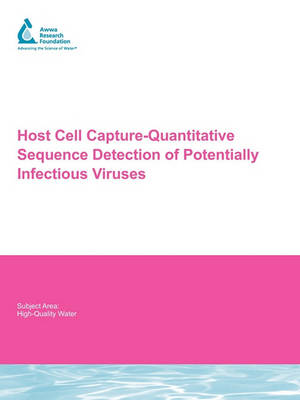Conventional detection of infectious waterborne viruses involves the use of cell culture, which is time consuming and costly. Many different polymerase chain reaction (PCR) methods for the detection of viruses have been developed, with specificity, speed, and cost advantages over cell culture. However, PCR methods alone do not determine virus infectivity.
This project attempted to bridge the gap between the two detection strategies and build on their strengths. The main objective of this study was to further develop a method referred to as host cell capture quantitative sequence detection (HCC-QSD) for the rapid detection of potentially infectious viruses in water. Specific objectives were to (1) evaluate different host cell lines and capture conditions for their ability to capture enteric viruses, and (2) evaluate the ability of HCC-QSD to distinguish potentially infectious viruses from those inactivated by free-chlorine and ultraviolet light (UV). Waterborne viruses present a significant threat to human health, especially for the growing immunocompromised population. Currently, routine water monitoring and risk assessment for infectious viruses in water is hampered by the lack of rapid, specific, and cost-effective methods. In this study, significant progress was made in the further development of HCC-QSD as a rapid method for the detection and quantitation of potentially infectious viruses in water. Further evaluation of HCC-QSD with different enteric viruses and field samples will help us understand its strengths and limitations and allow its use for the routine monitoring of water for infectious viruses.
- ISBN10 1843392402
- ISBN13 9781843392408
- Publish Date 14 June 2009
- Publish Status Out of Print
- Out of Print 10 June 2016
- Publish Country GB
- Imprint IWA Publishing
- Format Paperback
- Pages 68
- Language English
